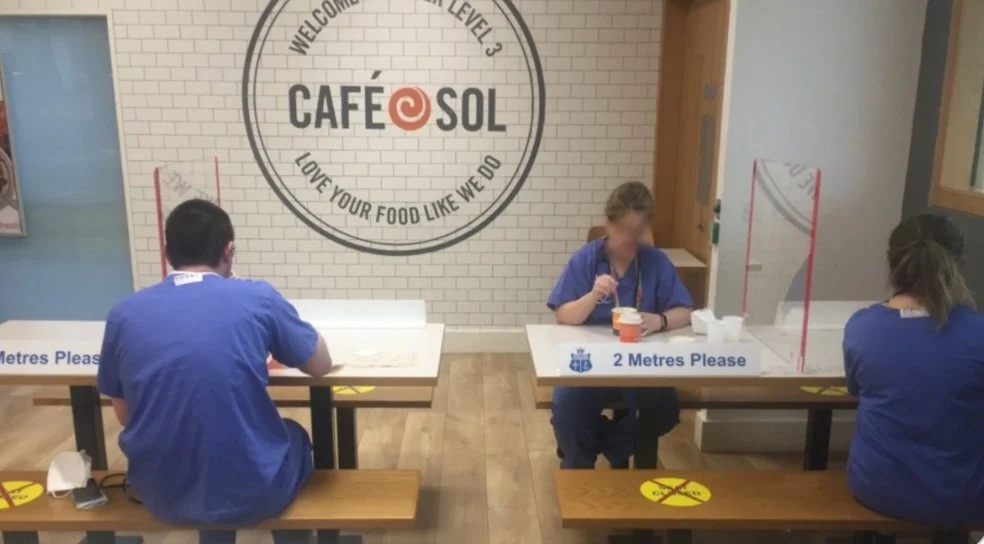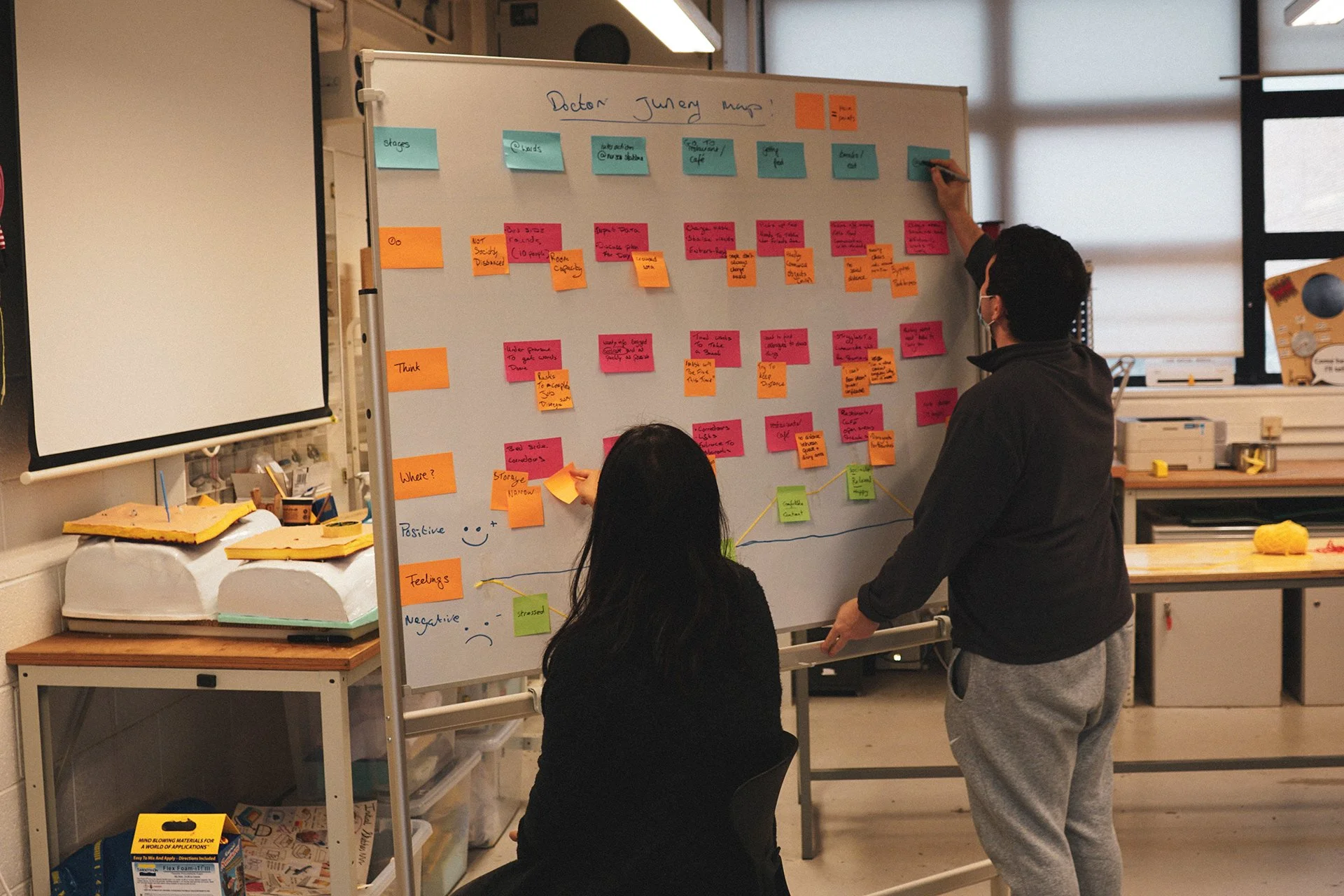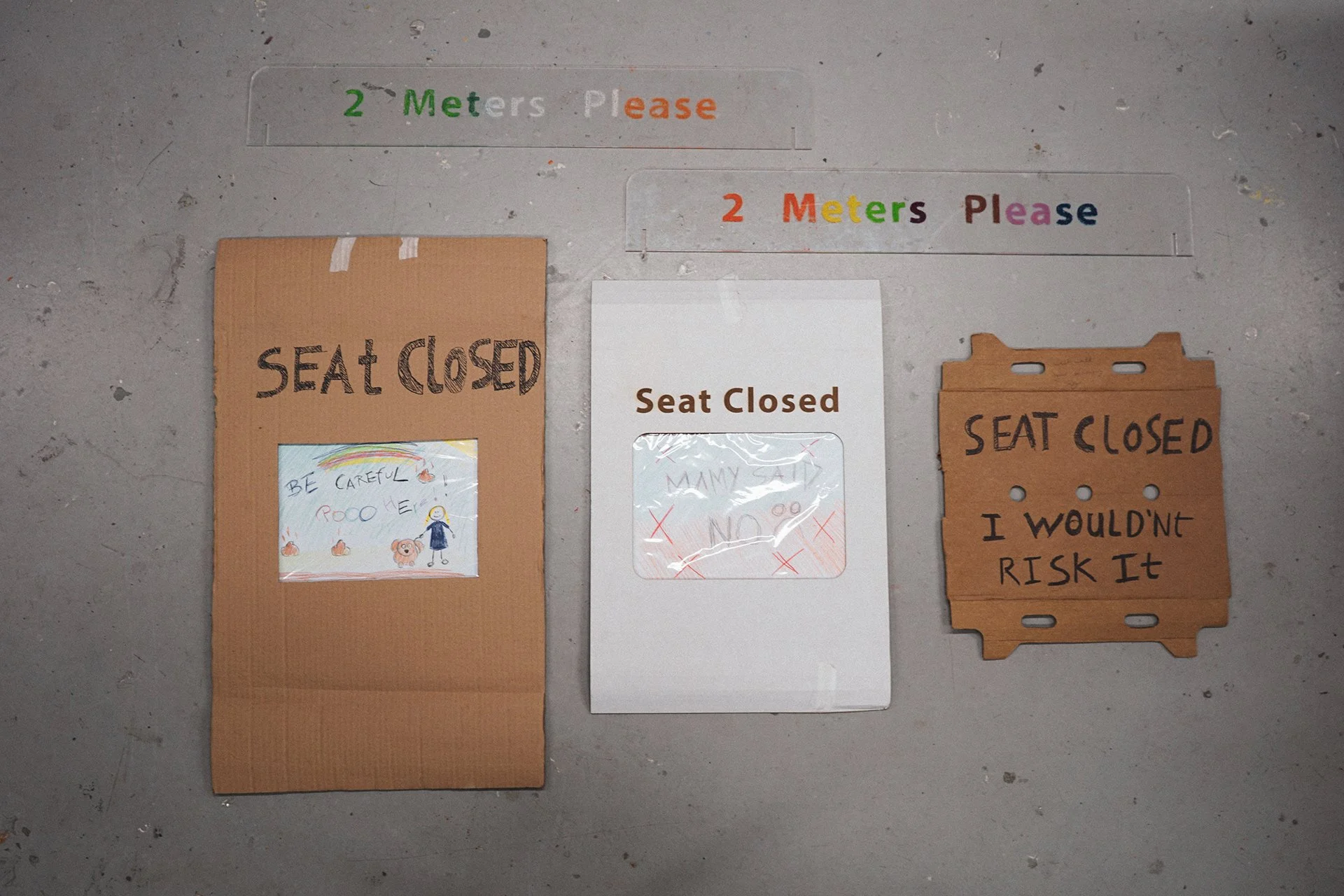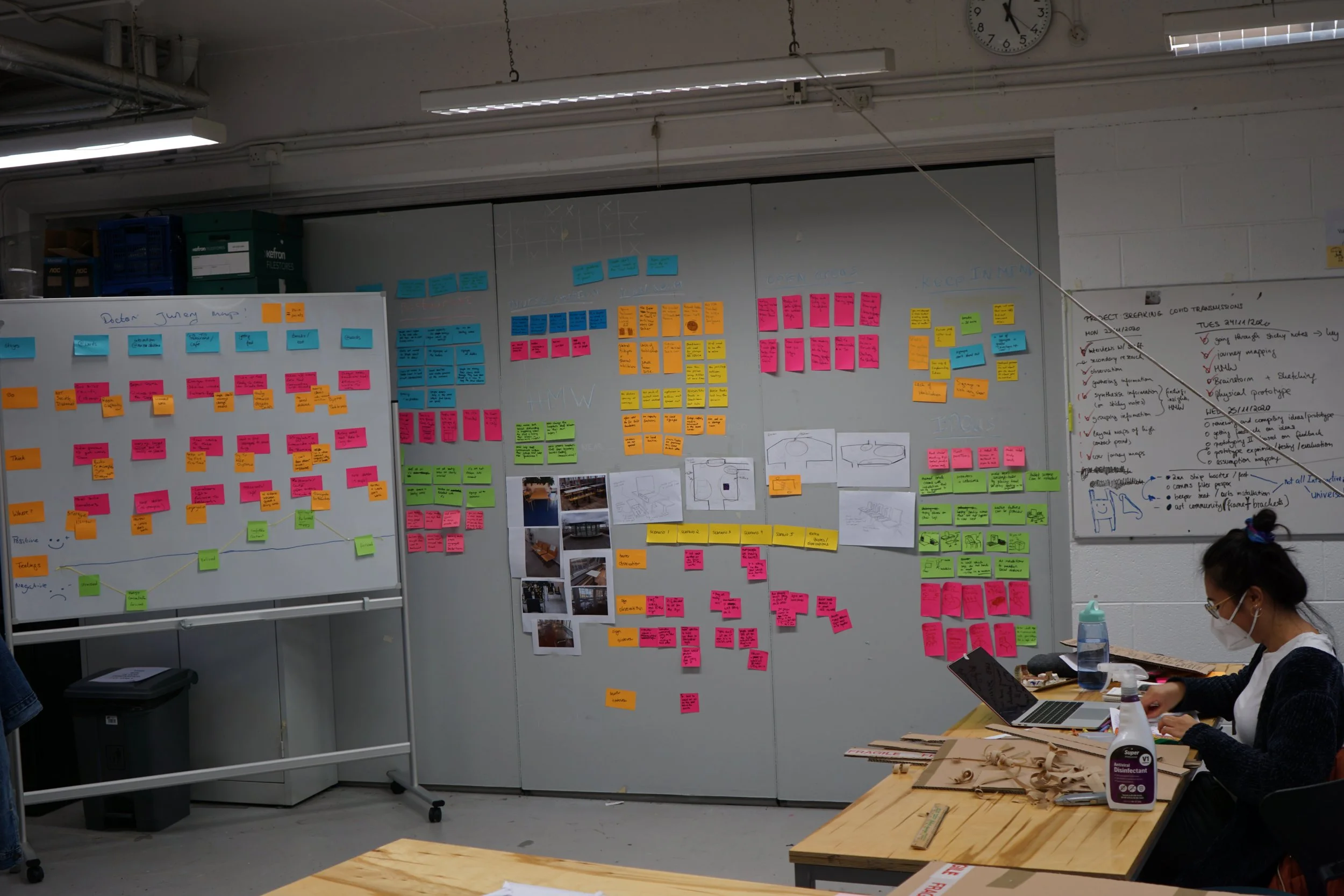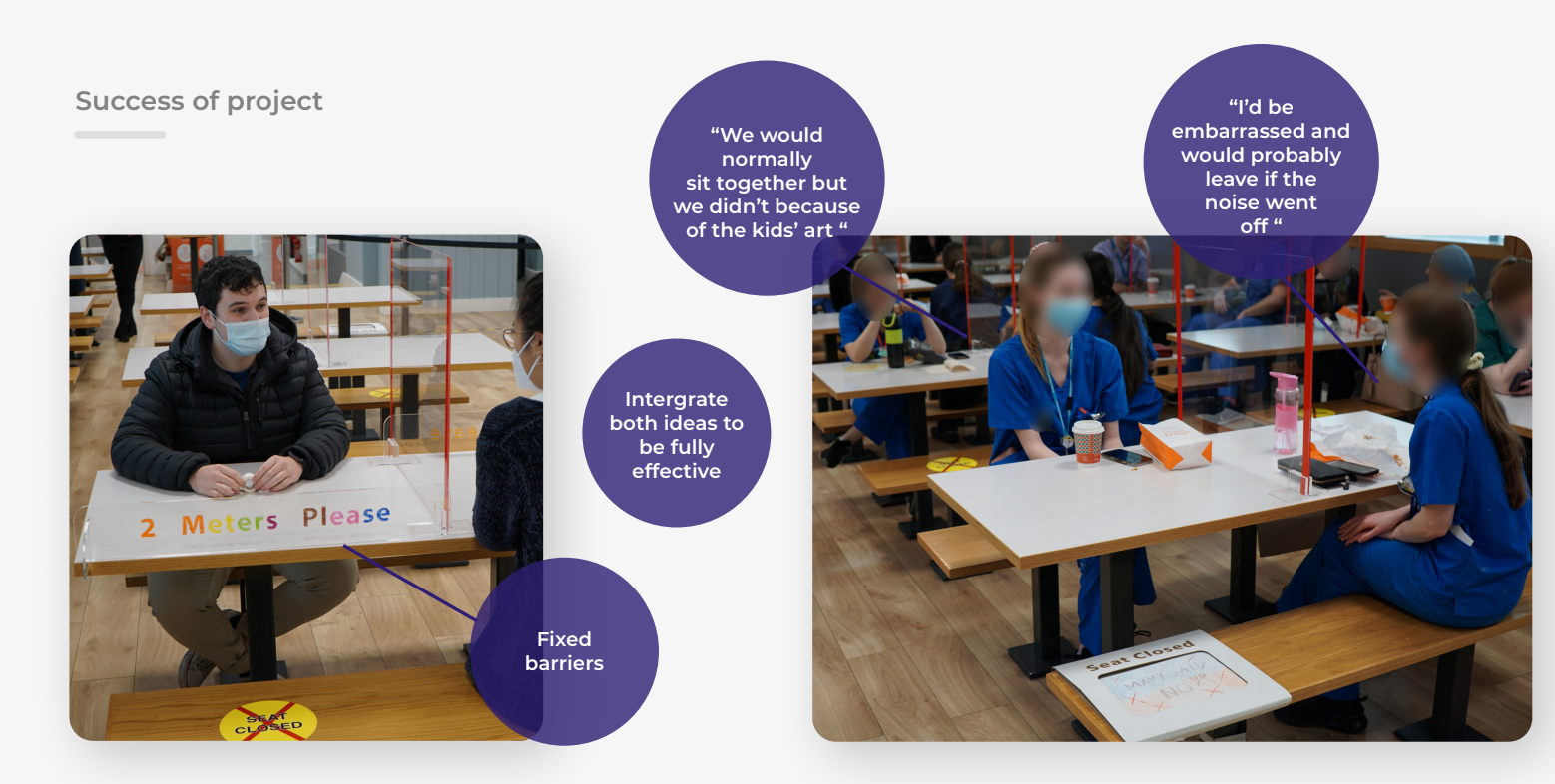Risky Business
Using community work to encourage hospital employees to keep their social distance during COVID-19.
Extent of the Project:
1 week (November 2020)
Industry:
Healthcare
Client:
Mater Misericordiae University Hospital
Dublin, Ireland
Team:
3 Designers (Medical Device Designer,
Interaction Designer, Service Designer)
My Role:
Service Designer, Project Manager
Way of Working:
In-person
“(...) Chu and her teammates produced some really exciting yet practical solutions to address this challenge which the hospital had been battling with for some time. We have now implemented a number of the solutions proposed and are seeing the impact of their design skill directly in behavioural change in the break areas”
– Siobhan Manning, Service Innovation & Design Lead, Mater Hospital
Problem area
Capacity and presence of doctors and other medical staff have become more important than ever due to pandemic.
Hospital staff became less cautious about safety advice and pay less attention to e.g. keeping social distance to each other in break areas.
Objective
Identifying a new way to prevent the transmission of the virus within the break area of the hospital and to encourage hospital staff to keep their safety.
2m barrier
A simple barrier that is fixed on the table in the canteen and cafés to prevent staff from sitting in front of each other or leaning over. The barrier can be painted by children to make them colourful and to bring joy.
Children's community work signage
A "seat closed" signage made by children to tell staff in a humorous and fun way not to sit in a certain place. The signage frame is reusable as paintings can be swapped out. To make sure there is no attempt to sit on them, a sound will appear whenever someone is sitting on it. This is triggered by "pressure" that occurs on the signage.
Approach summary
1. Building a project plan to make sure needed design methods and aspects are considered within the time constraint.
Discover
2. Identifying problems and understanding behaviours by conducting staff and break areas observation as well as by interviewing staff.
3. Undertaking Secondary Research to help understanding the situation and to find possible ways to tackle problem areas.
Explore & Define
4. Using gathered information and put them into context by using tools such as User Journey, Clustering, Stakeholder Map.
Develop & Test
5. Sketching concept ideas and getting feedback from client.
6. Narrowing ideas, redefining concept ideas and getting first prototypes (paper-prototype, cardboard prototype) done.
Deliver & Listen
7. Experience testing of mid-fi prototypes in the canteen of the hospital.
8. Iterating prototype and finalising concepts.
9. Providing guidelines, information on implementation and costs and how to measure the concept's success.
Our research has shown that the real issue lies in the desensitisation of COVID-19 signages.
We developed fun and innovative concept ideas that are associated with positive emotions to help changing people's behaviour and to nudge them to social distancing.
We have decided to further develop the 2-meter barrier and children's community work signage ideas after getting feedback from the client.
What we have learned in our experience test
Barriers need to be fixed on the table so they cannot be moved away.
Children's drawings put a smile on people's faces and prevent the majority from sitting on them.
Some people do not mind sitting on a child's painting.
=> Pressure sound is crucial to guarantee 100% effectiveness.
Ways to measure the success
Observation and counting numbers of people who do not follow social distance advice before and after implementation.
Number of COVID-19 transmissions within the hospital.
The Mater Hospital successfully implemented the 2-meter barrier concept in which, as a result, positive change in staff's behaviour could be observed.
Screenshot of a social media post by Mater Transformation (Mater Transformation, 2021)
